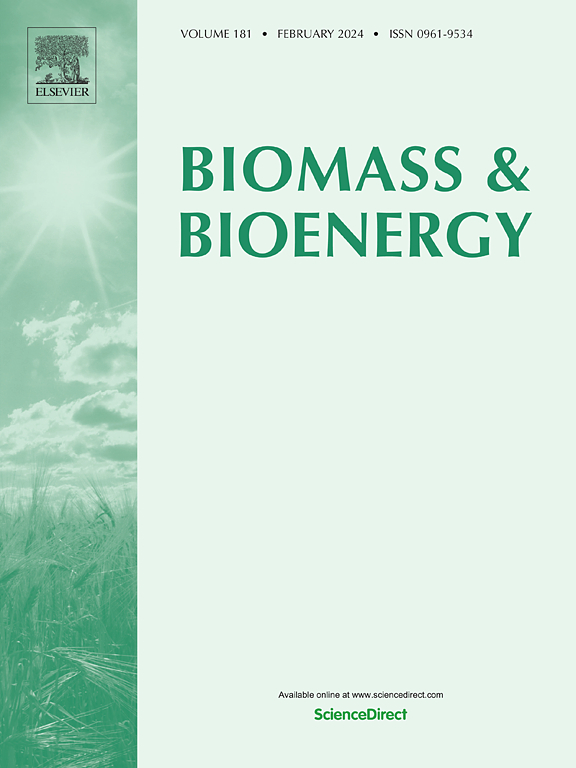Negative CO2 emissions through iG-CLC of pinus residue in a continuous unit of 0.5 kWth using a natural Mn-based oxygen carrier
IF 5.8
2区 生物学
Q1 AGRICULTURAL ENGINEERING
引用次数: 0
Abstract
The use of renewable fuels, as biomass, in the chemical looping combustion process becomes an attractive solution to bioenergy technology with CO2 capture (BECCS). In this work, a manganese ore from Brazil (MnT1000) was evaluated as an oxygen carrier to promote the conversion of a pine residue biomass by the in-situ Gasification-Chemical Looping Combustion (iG-CLC) technology in a 0.5 kWth continuous experimental unit installed at ICB-CSIC. The main parameters studied were the influence of fuel reactor temperature, air excess, and oxygen-to-biomass ratio on the performance of the MnT1000 evaluating CO2 capture efficiency and total oxygen demand. Under all experimental conditions, CO2 composition was higher than 84% at the fuel reactor outlet gas on a dry N2-free basis. The unburned gases such as CH4, CO and H2 were present in low concentration, attributed to the high reactivity that MnT1000 has with H2, CO and CH4. In general, higher temperatures, higher oxygen excess ratio and lower oxygen-to-biomass ratio reduced the total oxygen demand, with no great influence on CO2 capture efficiency. Most of the experiments showed capture efficiency above 90%, and a total oxygen demand in between 5.9 and 13.7% for the experimental conditions studied with low specific solid inventories (760 – 833 kg MW−1). The amount of tar quantified in this study was low, corresponding to a total of 1.32 g Nm−3, composed mainly of naphthalene and phenanthrene. In all experimental conditions, MnT1000 showed promising behavior, its reactivity remained high and constant throughout whole operation and no agglomeration problems were observed.

求助全文
约1分钟内获得全文
求助全文
来源期刊

Biomass & Bioenergy
工程技术-能源与燃料
CiteScore
11.50
自引率
3.30%
发文量
258
审稿时长
60 days
期刊介绍:
Biomass & Bioenergy is an international journal publishing original research papers and short communications, review articles and case studies on biological resources, chemical and biological processes, and biomass products for new renewable sources of energy and materials.
The scope of the journal extends to the environmental, management and economic aspects of biomass and bioenergy.
Key areas covered by the journal:
• Biomass: sources, energy crop production processes, genetic improvements, composition. Please note that research on these biomass subjects must be linked directly to bioenergy generation.
• Biological Residues: residues/rests from agricultural production, forestry and plantations (palm, sugar etc), processing industries, and municipal sources (MSW). Papers on the use of biomass residues through innovative processes/technological novelty and/or consideration of feedstock/system sustainability (or unsustainability) are welcomed. However waste treatment processes and pollution control or mitigation which are only tangentially related to bioenergy are not in the scope of the journal, as they are more suited to publications in the environmental arena. Papers that describe conventional waste streams (ie well described in existing literature) that do not empirically address ''new'' added value from the process are not suitable for submission to the journal.
• Bioenergy Processes: fermentations, thermochemical conversions, liquid and gaseous fuels, and petrochemical substitutes
• Bioenergy Utilization: direct combustion, gasification, electricity production, chemical processes, and by-product remediation
• Biomass and the Environment: carbon cycle, the net energy efficiency of bioenergy systems, assessment of sustainability, and biodiversity issues.
 求助内容:
求助内容: 应助结果提醒方式:
应助结果提醒方式:


